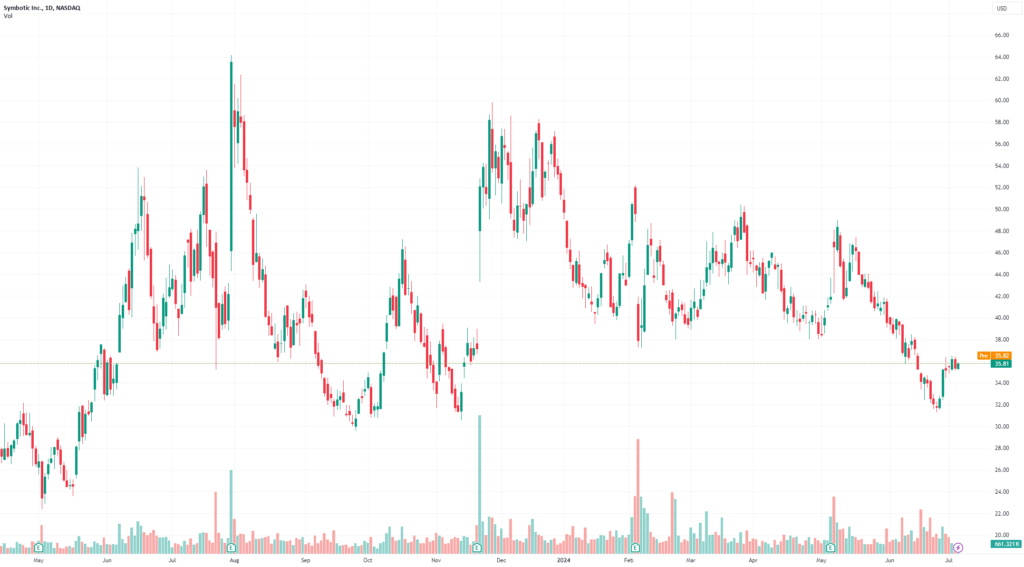
Key arguments in support of the idea.
• The Company’s services will be more demanded over time.
• Comparative valuations imply growth potential.
• Technical analysis.
Investment Thesis
Symbotic Inc. (SYM) is an automation technology company, providing robotics and
technologies to improve the efficiency of retail and wholesale stores in the US. The
Company offers its comprehensive warehouse automation system (Symbotic) for
product distribution; besides, it develops, builds and installs modular inventory
management systems, and performs firmware configuration.
The Company has a strong customer base, including the world’s largest retail and
wholesale companies, such as Walmart, Albertsons, AFS, C&S Wholesale Grocers,
Giant Tiger, GreenBox, Target and UNFI, which means that its solutions are
becoming more popular among companies engaged in sales of everyday (and
other) goods.
Although Walmart is the Company’s main customer (about 88% of the order book),
which poses a risk of counterparty concentration, Symbotic has a clear plan for
automating its outlets and warehouses. By the end of FY 2026, according to the
Company, about 65% of stores will be automated, approximately 55% of the
volume of order processing centers will pass through automated facilities, and
average unit costs may be reduced by about 20%. For the retail giant, it will be vital
to make this plan a reality, since its operating profitability has tended to decrease
over the past 10 years, and the increased shoplifting only exacerbates the problem.
Moreover, Greenbox, the joint venture between Symbotic and Softbank, aims at
implementing the WaaS strategy (Warehouse as a service, or “subscription
warehouse”). The Company says that the geography of this solution is quite
extensive: TAM (total addressable market) can exceed $500 billion. GreenBox has
recently signed a contract with the first client, C&S, therefore, Symbotic will begin
to recognize the first revenue from the joint venture in FY24Q3. The scaling of
operations is supposed to begin in full swing from 2026.
The main part of Symbotic’s contracts involves compensation for expenses
incurred in excess of those stipulated in the contract. Thus, the Company can
maintain its gross margin, and achieve profitability by increasing the scale of sales
and optimizing SG&A expenses: the share of quarterly administrative expenses in
revenue has decreased from 47% to 22% over the past two years. Besides, revenue
is growing at a high double-digit rate (more than 50%): FY24 estimates imply similar
growth.
Although most of this kind of business is made within conglomerates, such as
Honeywell or Toshiba, there is a similar public company on the European market –
AutoStore Holdings Ltd. (AUTO-NO). However, the SYM forward EV/EBITDA (10.6x)
looks a bit more attractive than that of its competitor (12.3x).
Recently, the stock price, reaching oversold, has made a reversal from the
horizontal support level, and further momentum may continue due to positive
expectations from the report.
We expect SYM stock to grow more than 20% to $45 over the next two months. A
stop loss order is recommended at $29.4.


